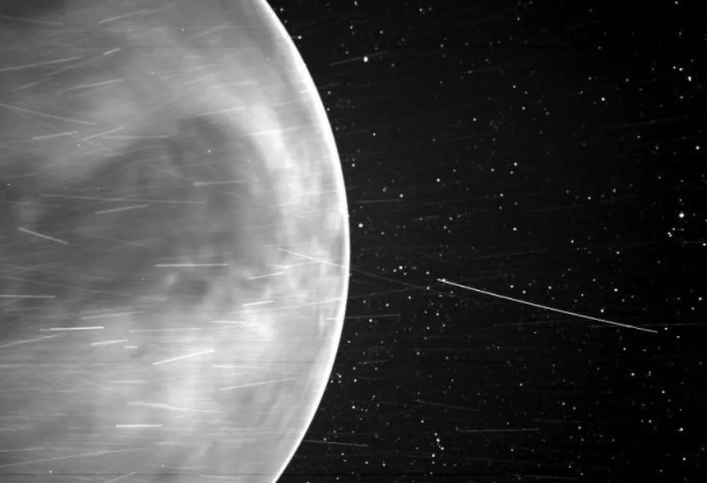NASA’s Parker Solar Probe surprises scientists with wild image of Venus

A camera installed on the probe suggests it may be more sensitive to infrared light than expected.
NASA’s Parker Solar Probe, a diminutive spacecraft designed to “touch the sun,” nabbed wild new images of the hellacious planet Venus in a recent flyby, surprising scientists and offering new opportunities for science.
While flying past Venus, the probe captured photos of a bright rim of light around the planet, NASA said Wednesday. Researchers said this rim is night glow, or, “light emitted by oxygen atoms high in the atmosphere that recombine into molecules in the nightside.”
The image, captured by the Wide-field Imager for Parker Solar Probe (WISPR), also show’s Venus’ biggest highland region, a spot called Aphrodite Terra. In the image above, it’s the dark section in the middle.\
“WISPR is tailored and tested for visible light observations. We expected to see clouds, but the camera peered right through to the surface,” said Angelos Vourlidas, WISPR project scientist from the Johns Hopkins Applied Physics Laboratory. This could mean that WISPR is capable of capturing near infrared light. The team is wondering if it can be used to study dust not only around the sun, but within the inner solar system
The Parker Solar Probe is on a seven-year mission to study solar wind, but uses Venus’ gravity to get closer to the sun. The probe is the fastest human-made object and closest object to the sun we’ve ever constructed and it uses the Venus flybys to increase its speed and tighten its orbit.
The last flyby occurred on Feb. 20, 2021, which will help the probe’s speed increase to 147 kilometers per second. That means it could get from Yankee Stadium in New York to Philadelphia in the blink of an eye.



 Creators of mankind
Creators of mankind Description of “Tall white aliens”
Description of “Tall white aliens” Where they came from?
Where they came from? About hostile civilizations
About hostile civilizations The war for the Earth
The war for the Earth “Tall white aliens” about eternal life
“Tall white aliens” about eternal life Video: “Nordic aliens”
Video: “Nordic aliens” Aliens
Aliens Alien encounters
Alien encounters The aliens base
The aliens base UFO
UFO Technology UFO
Technology UFO Underground civilization
Underground civilization Ancient alien artifacts
Ancient alien artifacts Military and UFO
Military and UFO Mysteries and hypotheses
Mysteries and hypotheses Scientific facts
Scientific facts


















